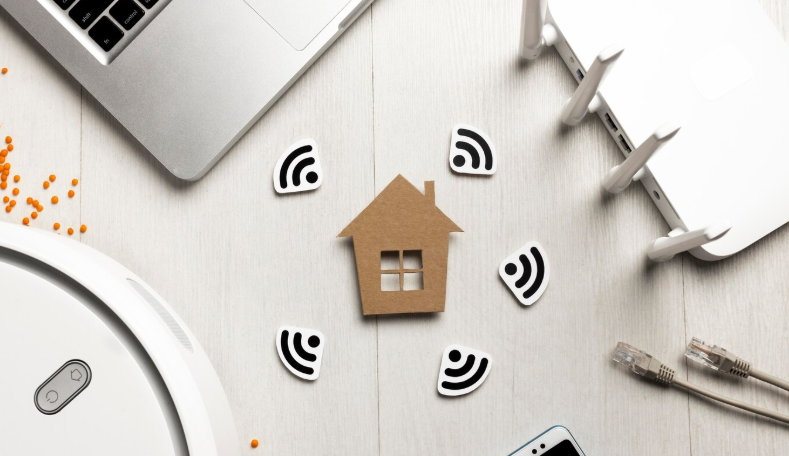Disasters, whether natural or man-made, have long posed significant challenges to communities around the world. However, as technology advances, disaster management and response efforts are becoming more efficient and effective. From early warning systems to real-time communication tools, modern technological solutions are transforming how we prepare for, respond to, and recover from disasters. This article explores the role of technology in improving disaster management and response, highlighting innovations that are saving lives and enhancing resilience.
The Role of Technology in Disaster Management
Disaster management is a complex process that involves preparedness, response, recovery, and mitigation. Each stage requires effective communication, data collection, and decision-making, all of which can be greatly enhanced by technology. By integrating innovative tools and systems, authorities and organizations can provide faster, more accurate responses, ultimately reducing the impact of disasters.
1. Early Warning Systems
Early warning systems are one of the most important technological advancements in disaster management. These systems use data collected from satellites, sensors, and other sources to detect potential disasters—such as earthquakes, hurricanes, floods, and tsunamis—before they occur. By issuing warnings ahead of time, authorities can help people evacuate or take protective measures to minimize loss of life and property.
- Earthquake Early Warning Systems: In countries like Japan and Mexico, earthquake early warning systems provide critical seconds to minutes of advance notice, allowing people to take cover and trains to stop, preventing injuries and damage.
- Weather Forecasting: Meteorological technologies such as satellites and radar systems have significantly improved weather predictions. This allows for better forecasting of storms, floods, and other extreme weather events, helping governments and organizations prepare more effectively.
2. Drones and Unmanned Aerial Vehicles (UAVs)
Drones and UAVs have revolutionized disaster response by providing aerial views of affected areas in real-time. After a disaster, drones can fly over inaccessible or dangerous regions to assess damage, locate survivors, and deliver supplies. Their ability to reach places that are difficult for humans to access makes them invaluable tools in disaster management.
- Damage Assessment: Drones equipped with cameras and sensors can capture high-resolution images of disaster zones, helping authorities quickly assess the scale of damage and prioritize response efforts.
- Search and Rescue: Drones are often deployed in search and rescue operations, locating trapped individuals, assessing the structural integrity of buildings, and mapping out affected areas to guide rescue teams.
3. Geographic Information Systems (GIS) and Mapping Technologies
Geographic Information Systems (GIS) play a pivotal role in disaster management by providing spatial data to help emergency responders make informed decisions. GIS combines geographic data with other information, such as population density, infrastructure, and hazard maps, to create detailed maps that guide disaster response.
- Real-Time Mapping: GIS tools can update disaster maps in real-time, tracking the movement of wildfires, floods, or storms. This helps first responders to focus their efforts where they are needed most.
- Evacuation Planning: GIS technologies are used to model evacuation routes, helping authorities determine the safest and most efficient routes for evacuations during a disaster.
4. Mobile Apps for Disaster Response
Mobile technology has transformed how individuals and communities prepare for and respond to disasters. Mobile apps are now essential tools for delivering early warnings, providing emergency services, and coordinating relief efforts. These apps can help in a variety of ways:
- Disaster Alerts: Many countries have mobile apps that send real-time alerts about impending disasters, such as hurricanes, earthquakes, or wildfires, ensuring that people are informed and can take immediate action.
- Crowdsourcing Information: Mobile apps that allow users to report incidents, share location data, or request help have become vital during large-scale disasters. For instance, during Hurricane Harvey in 2017, platforms like Zello (a walkie-talkie app) and crowdsourcing apps like Ushahidi were used to coordinate rescue efforts and gather information on flooded areas.
5. Artificial Intelligence (AI) and Machine Learning
Artificial Intelligence (AI) and machine learning are becoming increasingly important in disaster management, as these technologies can analyze vast amounts of data quickly and accurately. AI algorithms can predict the impact of a disaster, optimize resource allocation, and even help with decision-making in real-time.
- Predictive Analytics: AI models can analyze historical disaster data and current environmental conditions to predict where and when a disaster is likely to occur. This allows governments and organizations to deploy resources ahead of time and make better decisions during emergencies.
- Automated Response: AI-powered chatbots and virtual assistants are being used to provide immediate assistance to people affected by disasters. These systems can guide individuals to safety, offer evacuation instructions, and answer frequently asked questions.
6. Social Media and Real-Time Communication
Social media platforms have become essential tools for disaster response, providing real-time updates, organizing relief efforts, and connecting affected individuals with emergency services. During a crisis, social media can be used to share critical information quickly, helping to spread alerts and instructions to large groups of people in real time.
- Information Dissemination: Twitter, Facebook, and other platforms are often used to broadcast disaster alerts, evacuation routes, and other key information. During emergencies, social media can also be used to communicate directly with survivors to check on their wellbeing.
- Volunteer Coordination: Social media also allows for the coordination of volunteers, with organizations and individuals using platforms to offer or request help. This becomes particularly important in large-scale disasters where government response may be overwhelmed.
7. Blockchain Technology
Blockchain technology, which is often associated with cryptocurrency, is being explored as a solution for managing disaster relief efforts. Blockchain can create transparent, immutable records for the distribution of aid, ensuring that resources are allocated fairly and efficiently.
- Aid Distribution: By using blockchain, humanitarian organizations can track donations and ensure that funds reach their intended recipients without being misused.
- Supply Chain Management: Blockchain technology can be used to track supplies in disaster zones, preventing fraud and ensuring that relief items, such as food and medicine, are distributed where they are most needed.
The Future of Technology in Disaster Management
As technology continues to advance, we can expect even more innovative solutions to improve disaster management and response. Emerging technologies such as 5G networks, the Internet of Things (IoT), and advanced robotics are poised to further enhance disaster preparedness and recovery efforts.
- 5G Networks: With faster data transmission speeds, 5G networks will allow for more reliable communication between first responders, emergency teams, and affected individuals, facilitating faster response times and real-time coordination.
- Robotics: Robots are being developed to assist in search and rescue operations, navigate hazardous environments, and deliver supplies to affected areas. These robots could significantly reduce the risks faced by human responders.
Conclusion
Technology has revolutionized the way we approach disaster management and response. From early warning systems and drones to AI-powered analytics and blockchain, technological innovations are making disaster preparedness more accurate and response efforts more efficient. As technology continues to evolve, it is clear that the future of disaster management will be increasingly driven by data, connectivity, and automation, offering hope for improved outcomes and faster recovery in the face of natural and man-made disasters.


